

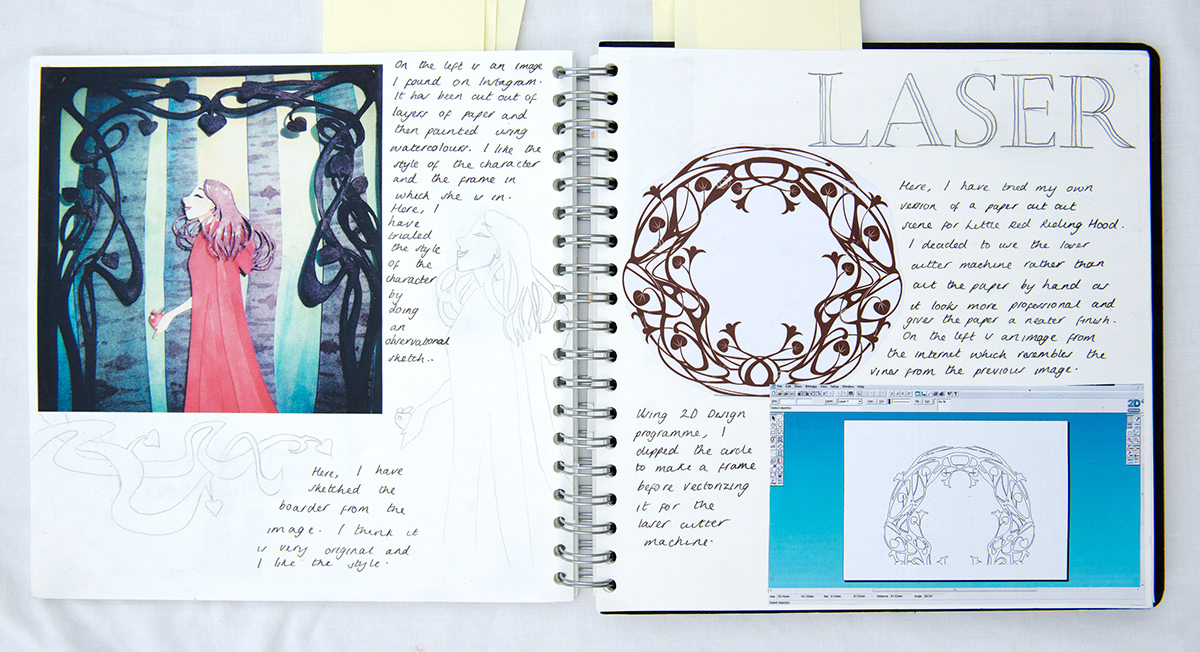


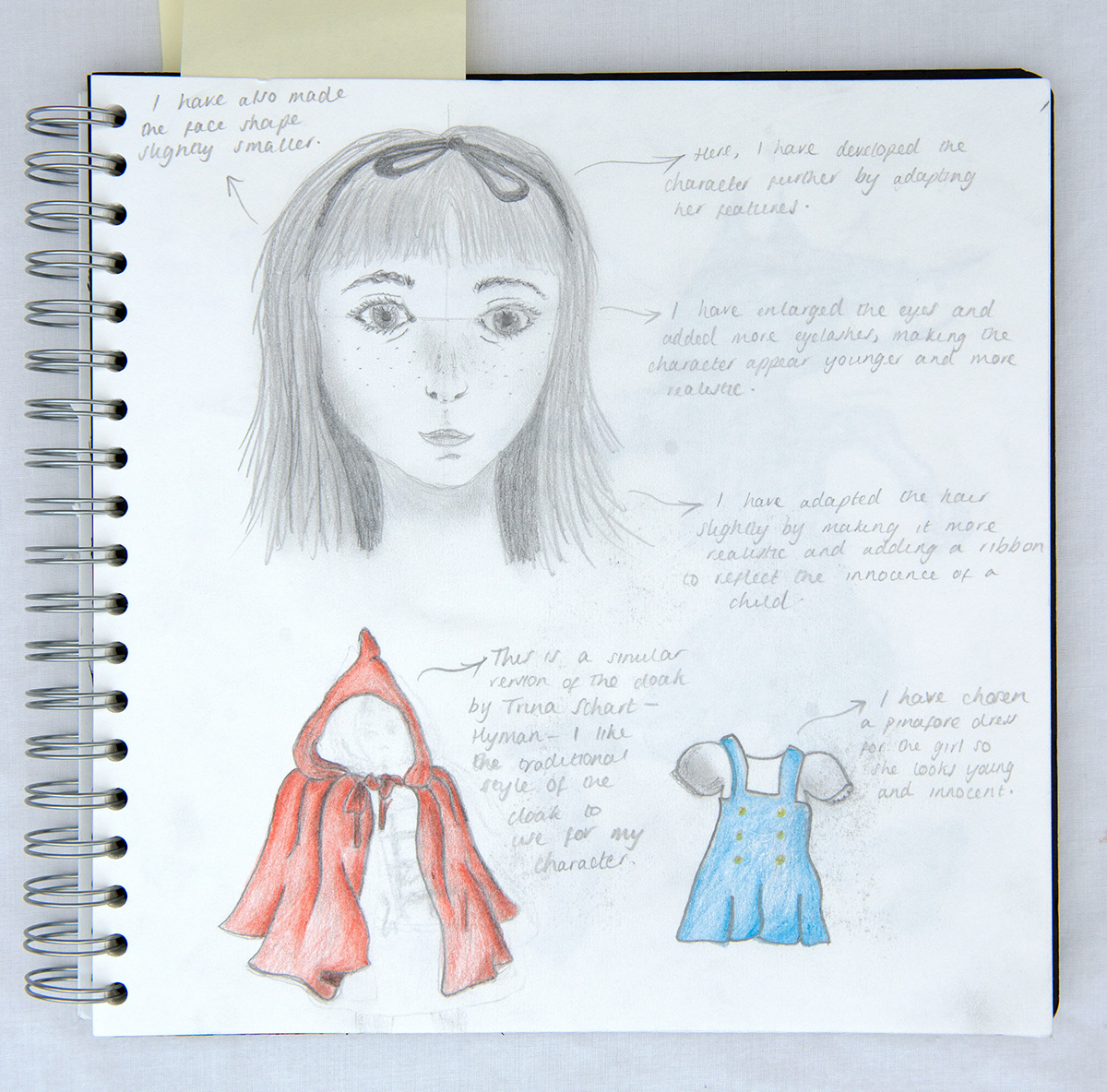
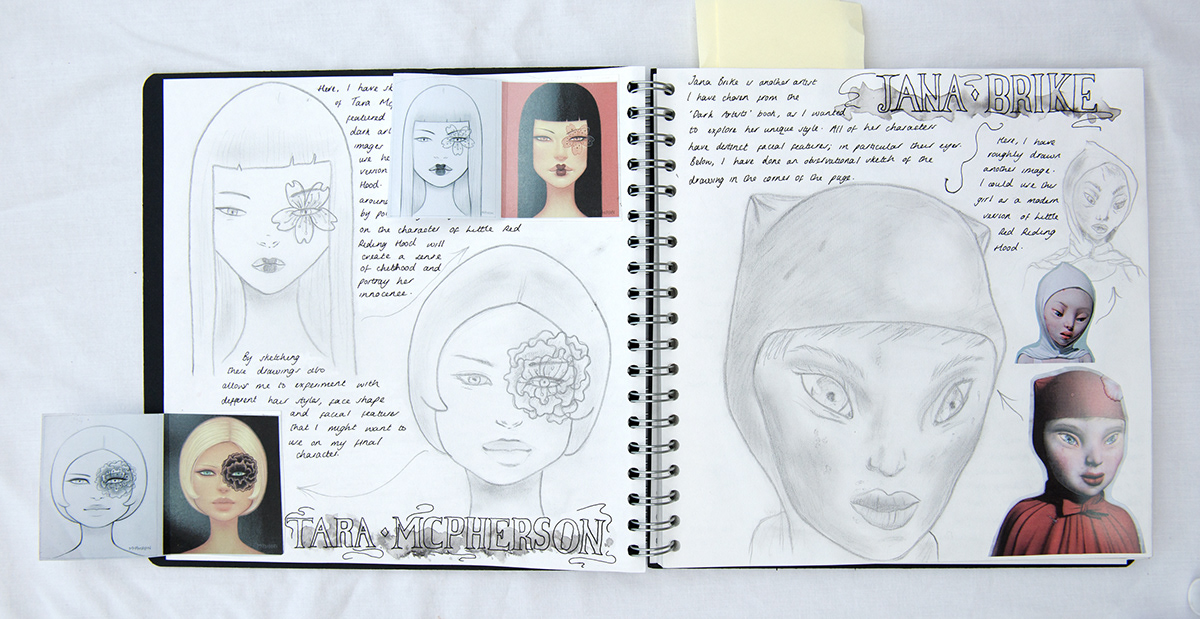
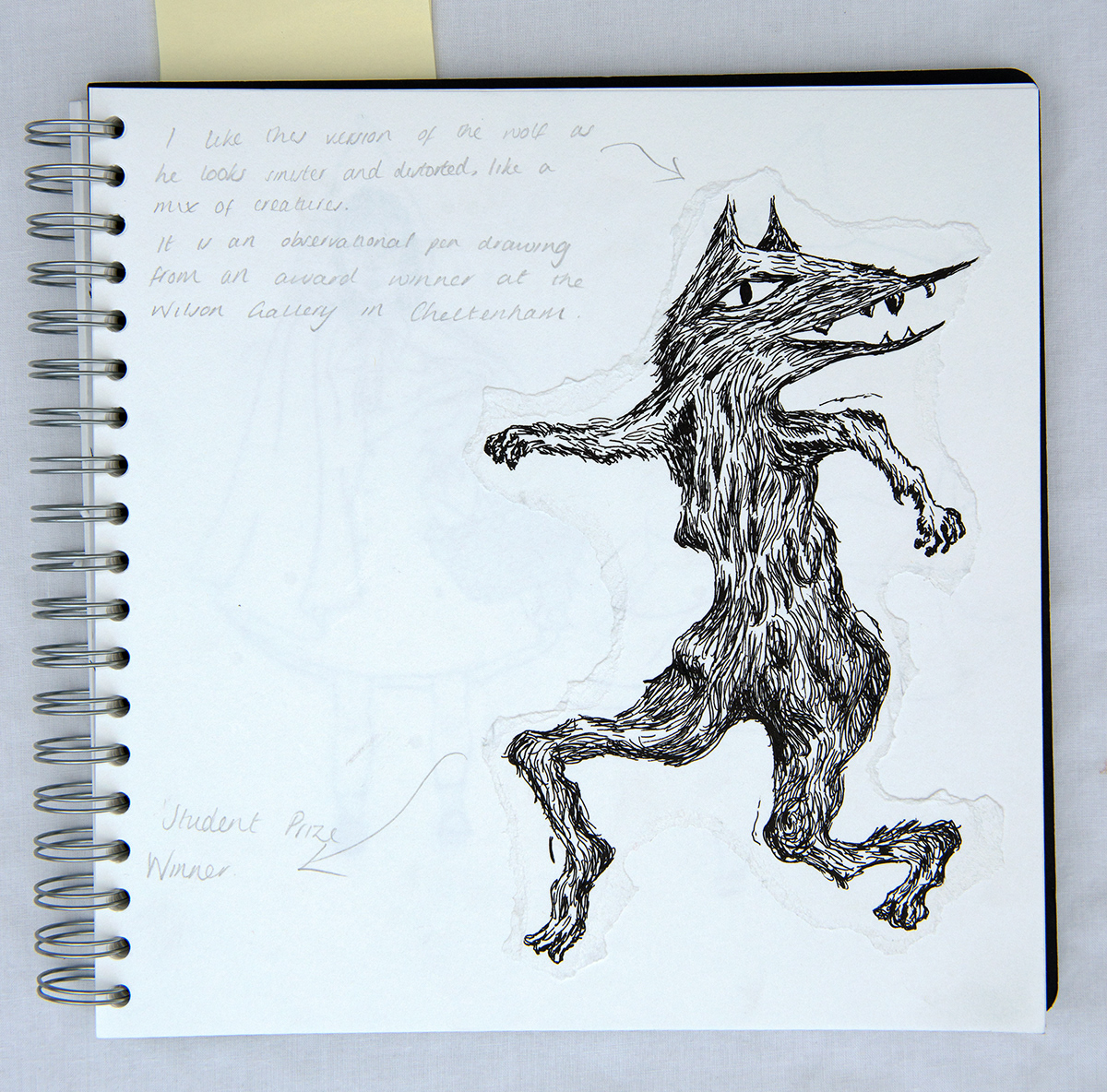
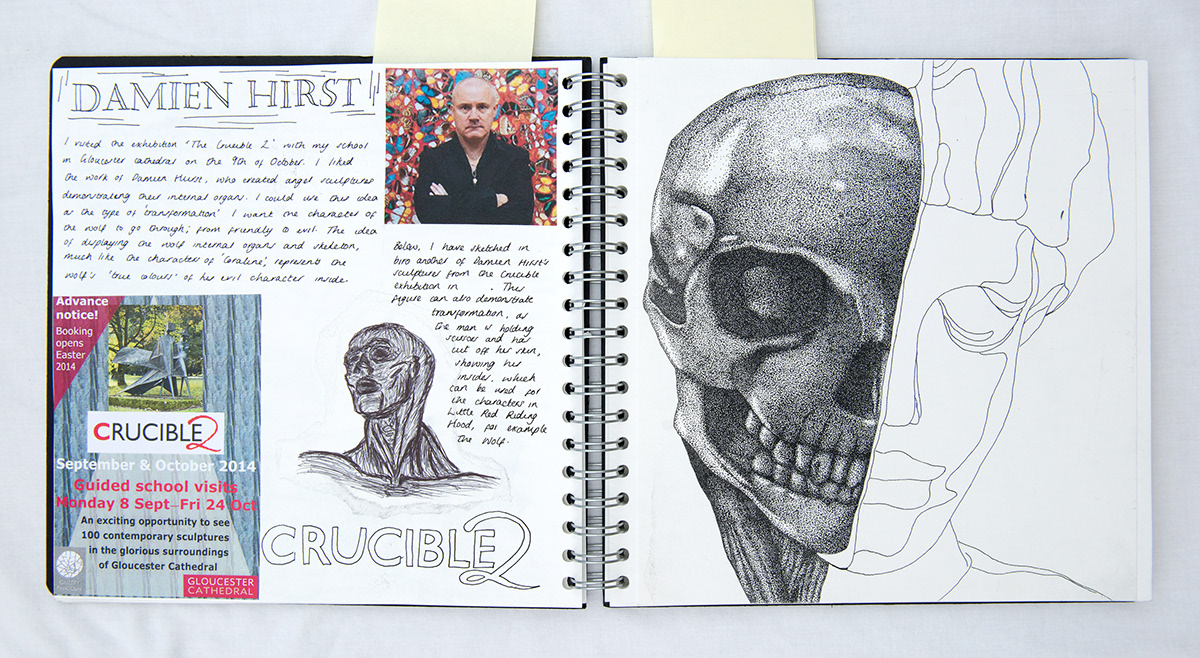
How Guerrilla Advertising is used to convey messages in Graphics
Guerrilla advertising is an eye catching and increasingly important part of graphic design in that it portrays messages through the use of graphic images and texts. These may include posters, television advertisements, book illustrations and sculptures. For my personal study, I am creating a model of what would be a life size exhibition based on the story of ‘Little Red Riding Hood’. I have researched children’s books and various illustrators such as Daniel Egneus and Trina Schart Hyman in order to recreate my own illustrations and develop my own characters, before developing my ideas into paper models of the characters and scenery, in order to create an exhibition of the story. I am also emphasising the meaning and moral of the story; beware of strangers and don’t step off the path, through the use of graphics such as typography and shadows. I have decided to research guerrilla advertising as it can be used to portray my exhibition through advertisements such as posters, or to simply convey the moral of the story to my chosen audience, as it is an effective way of promoting my exhibition as it creates an impact and is memorable.
The term ‘guerrilla’ for guerrilla advertising, refers to a type of warfare, reflecting the fact that the advertisements stand out to the chosen audience; they often convey strong messages and can be shocking to look at, creating an impact and making the advertisements memorable. Guerrilla advertising was originally a marketing strategy which was low cost, and uses unique, original ideas as a way of conveying messages to the public. These originally included the use of graffiti, sticker bombing and flyer posting, which were used publically to draw attention to an idea, product, or campaign. Today, guerrilla marketing may also include promotion through organisations, and uses photography and the internet.
The first to identify and promote the strategy of guerrilla advertising was Jay Conrad Levinson. American business writer and author of ‘Guerrilla marketing’, Levinson created marketing materials for all media, and for other large companies, such as Chrysler Corporation, Honda and Playboy. Figure 1 is a print screen of Levinson’s website, which consists of tutorials teaching the site users how to create and use guerrilla advertising and examples of his work. The website is open for anyone to use, and demonstrates how guerrilla marketing has become such a popular method of advertising.
An example of simple guerrilla advertising that can be used in everyday life is shown in the work of ‘Campaign against Landmines’ (Figure 2). By using restaurant ketchup packets, the campaign has demonstrated the effects of walking on a landmine, whilst making the public aware of the dangers that are present in war – affected countries. The typography on the ketchup packets is a sans serif font, making it bold and informing people of how to make a donation to the campaign. The black and white colours also stand out and contrast against the vibrant red of the sauce, creating a disturbing yet effective image and having a memorable impact on the user. Similarly, Figure 3 shows another very simple yet effective way of guerrilla advertising. The company ‘Guinness’ has added small wraps to the ends of pool cues in bars and pubs, cleverly advertising their drink by subtly reminding players to have a Guinness. This not only advertises their drink, but by placing the wraps on pool cues targets their key audiences in bars and pubs.
I am considering using these subtle and effective types of guerrilla advertising as they can be used in my project to portray the story of ‘Little Red Riding Hood’; the message being ‘beware of strangers’. For example, I could place images from the story in children’s parks to warn them of strangers. Larger types of guerrilla advertising, such as what I may decide to use, include the work of Copenhagen zoo in America (Figure 4). A large sticker has been placed on the sides of the bus to catch the attention of people in the city, encouraging them to go to the zoo. Photography has been used in order to create this effect, which is realistic and very effective. The advert also has very little typography, making the main focus of the advertisement the photograph and emphasising the image of the snake, reflecting the idea of the zoo. The main piece of typography used on the image is the word ‘zoo’, which is in a sans serif font and bright red in colour, standing out and contrasting with the yellow background of the bus, making it memorable.
The models in my project are largely paper based and laser cut (see Figure 5), therefore guerrilla advertising using paper to convey the meaning of ‘Little Red Riding Hood’ will link to my project. An example of paper guerrilla advertising is shown in Figure 6, an advert for the ‘Greenpeace’ campaign, representing deforestation. The caption ‘deforestation continues with the turn of a page’ is very simple yet effective in engaging the reader, as it forces the audience to think about the message conveyed in the advertisement. The large amount of writing in a smaller font on the first double page spread represents a forest, making the pages appear busy as there is plenty look at, which contrasts greatly to the following pages, which are blank and represent how the forest has been destroyed. The typography has been used to create a visual impact as well as provide information about the campaign. This can link to my project as the typography I use can tell the story as well as create a visual impact conveying the moral of the story.
I have also considered including optical illusions in my project in order to convey the message of the story through my exhibition. Figure 7 is a screen shot of an advertisement for Apple, created by OK Go. There are many different optical illusions using typography throughout the advert, promoting the Apple Company’s products and presenting their message to the public. These optical illusions would create a twist to my work, making it more modern and an effective way of portraying the original story. This also links to guerrilla advertising as illusions such as these can be a form of guerrilla marketing; it is something that is seen less by the public and therefore will be a more memorable form of advertising. Similarly, Figure 9 is an advert on the sides of a lorry for ‘Bionade’ beer, where a photo of the bottle appears to be poking out of the lorry. The use of photography makes this image appear very realistic and the fact that it is larger than life makes it stand out and is eye catching.
Work of artists and sculptors from the website ‘This Is Colossal’ can also be used as a form of guerrilla advertising. I have used the work of many artists from this website to inspire my ideas for my project, such as shadow puppets and paper cut figures. Figure 8 is an example of paper work by artist Charles Young. He has cut and folded paper into miniature houses and buildings to create a vast paper city. This style of work can be used to represent a story, such as that of ‘Little Red Riding Hood’, and as a form of guerrilla advertising. These tiny paper figures could be used in classrooms, restaurants and many other places to subtly convey a message to the chosen audience. The tiny sculptures are very simple and subtle, however when used to convey as message can be very powerful and have a great impact. I want my models of the characters to reflect their personalities, for example Little Red Riding Hood is a naïve girl, and therefore simple paper cut figures can represent the simplicity and delicacy of childhood. Paper can also be painted, drawn on, and easily crafted, making it a good material to use for my models and for advertising.
